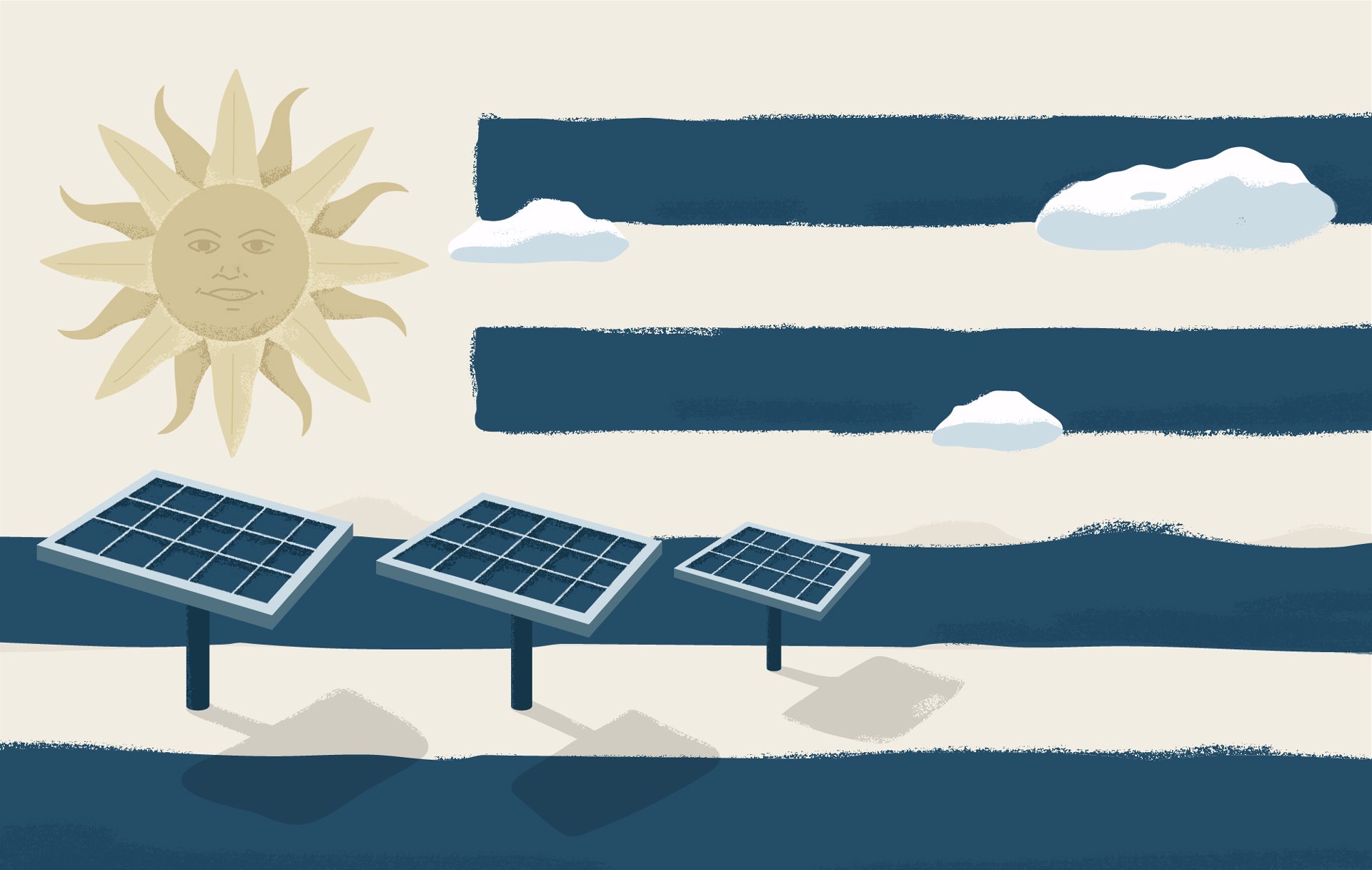“with wind the single-biggest contributor… Power production costs have declined “by almost half” … And the clean energy sector has created 50,000 new jobs… Ask me what was the impact on the electricity sector in Uruguay after this tragic war in Europe — zero.”



I wonder how much of that is biomass, and how they’re planning to grow enough vegetation to renew iy
https://app.electricitymaps.com/zone/UY
You can select 30d, year… And see how much was used for that period.
Not too much biomass fortunately. But even with some googling I can’t seem to find how anyone plans to produce enough biomass to keep this going
53% of power currently being generated by wind, the rest hydro. So there you go. They seem to be doing it, so there’s your answer.
deleted by creator
I don’t know how much I trust that website. It states that British Columbia has 100% of its power generation from an unknown source, which it labels as “500 grams per kwhr” equivalent to coal. But we know that 100% of British Columbia’s electricity comes from hydro…
https://github.com/electricitymaps/electricitymaps-contrib/blob/master/DATA_SOURCES.md#real-time-electricity-data-sources
They seem to be using publicly available data.
You can see here the source for the Uruguay https://apps.ute.com.uy/SgePublico/ConsPotenciaGeneracionArbolXFuente.aspx
The website’s number of 500g / kilowatt hour is completely wrong.
This is what BC hydro says:
An efficient, low cost electricity system for B.C. More than 90% of BC Hydro’s generation is produced by hydroelectric generation, which is generally the most cost-effective, clean and reliable option. We also continue to investigate alternative sources of energy, such as wind and wave power.
We generate over 43,000 gigawatt hours of electricity annually to supply more than 1.9 million residential, commercial and industrial customers.
Over 80% of BC Hydro’s installed generating capacity is at hydroelectric installations in the Peace and Columbia river basins.
About 87% of electricity in B.C. is produced from hydroelectric sources. B.C. is home to roughly 16 000 MW of hydroelectric capacity, most of which is located on the Columbia River in southeastern B.C. and the Peace River in the northeast. Site C, a new 1 100 MW hydroelectric facility, is currently under construction on the Peace River. The project is expected to be completed in 2025.
The greenhouse gas intensity of B.C.’s electricity grid Footnote 2 measured as the GHGs emitted in the generation of the province’s electric power, was 7.6 grams of CO2e per kilowatt-hour (g of CO2e per kWh) electricity generated in 2020. This is a 70% reduction from the province’s 2005 level of 24 g of CO2e per kWh. The national average in 2020 was 110 g of CO2e per kWh (Figure 8).
What is that unknown bar meant to be?
This aspect is a big aspect of intermittent renewables energy that is often dismissed: you need piloted energy as a backup, the amount of piloted energy depend on how oversized is the intermittent energy installation.
For renewable piloted energy there is two options that I know of: hydro and biomass. Uruguay is using both.
It’s something to keep in mind if we want to reach 100% renewables without nuclear, we need to increase the biomass electricity production.
On another hand we are already using a lot of biomass to produce ethanol and biodiesel. A lot of land is also use for animal feed, so I’m a society with less ICE cars and less meat eated we might have enough land to grow biomass for electricity generation.
Exactly, but I’m wondering how Uruguay is planning to go from a “might” to a “definitely” enough biomass production
I have no idea but I’m really interested to find out.
Well then it’s a good thing that’s United States produces 20 to 25% of its electricity through nuclear power generation. It would be a good idea to maintain that.
Biomass as a source of energy has a lot of the same problems as fossil fuels, no? Why is nuclear not on the table while biomass is?
You can check it out in real time here: UTE Generation Biomass is not something so actively sought, it’s more of a consequence of other industries here. You are correct that we have other renewable sources that work when wind is not on its peak. There are two hidro plants that can work when demand is large and wind is not on its peak, and they’ve managed to keep this regime even on dry or draught conditions.
We really need to think of biomass as batteries. In both cases, it’s tough to scale up enough for full coverage but we know how to store biodiesel or ethanol, it’s very energy dense. Scattering a bunch of diesel generators with big biodiesel tanks might be a better answer than batteries for when the wind doesn’t blow
It also ensures a market and distribution industry for farming and construction vehicles where batteries may not work
It takes a decade and quite a bit of space to make a tree (for example), it’s technically renewable but the fuel production is very slow. I’m curious how they’re planning to keep that up
Other things grow faster and take up less space than trees. For example most biofuel is made from maize and sugarcane.
Also how is biomass a battery? You can’t put energy back into a forest
Lots of devices still use batteries that do not recharge.
Ever heard of AA batteries?
You burn it, and it generates electricity in a thermal plant. Or you can use it directly to heat a boiler to heat buildings.
By that logic you could also not call the flat thing inside a phone a battery because it can’t feed back into the grid.